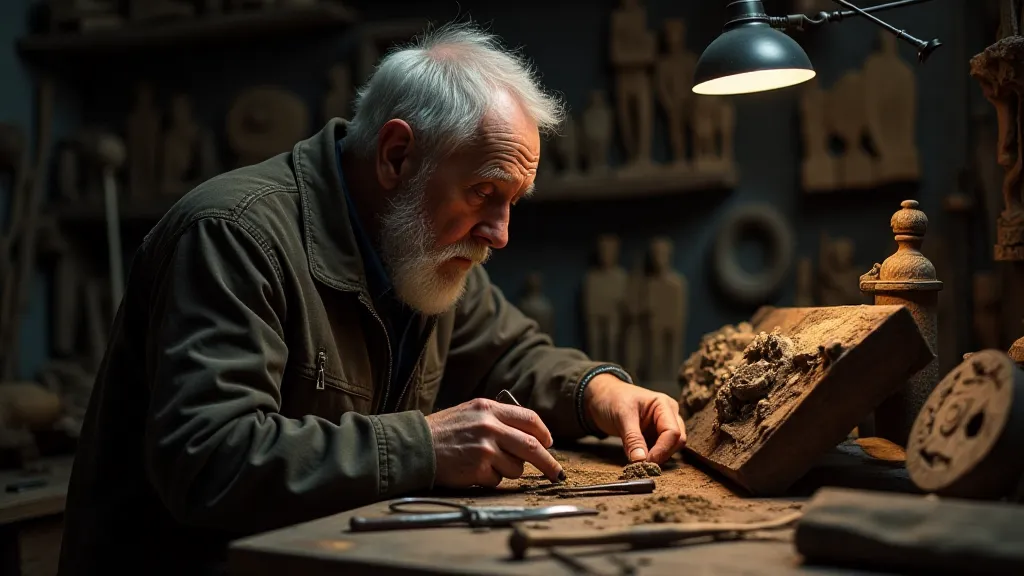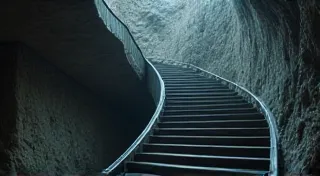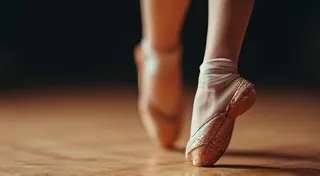The Geometry of Absence: Lost Carving Styles and Their Potential Reconstruction
There's a particular ache that settles in when you consider things lost – not just physical objects, but traditions, skills, entire ways of seeing the world. As a lover of woodworking, and especially of the intricate beauty of wood carving, I’m drawn to the echo of vanished artistry, the 'geometry of absence' left by carving styles that have largely disappeared. It’s more than just historical curiosity; it's a poignant recognition of the human need to create, and a challenge to see if those voices, those hands, can be, even partially, resurrected.
We often focus on the surviving traditions, the vibrant regional carvings that continue to inspire and delight. But what of the styles that slipped through the cracks of time, obscured by changing tastes, economic shifts, or the silencing impact of modernization? What remnants remain, and can we, as a community, piece them back together?
The Case of the Baltic “Runic” Carvings
Take, for example, the ‘runic’ carvings of the Baltic region – not, to be clear, related to the Norse runes, but rather a distinct style of geometric wood carving prevalent from the 17th to 19th centuries in what is now Latvia and Lithuania. Few practitioners remain, and documentation is scarce. What we *do* know comes from scattered examples found on furniture, building elements, and occasionally, folk tools. These weren't simply decorative; they were likely imbued with symbolic meaning, perhaps protective or connected to ancestral beliefs. The patterns are intensely complex – nested triangles, interlocking spirals, and a sense of controlled chaos that speaks to a deeply ingrained understanding of geometry and a reverence for the wood itself. The mastery lay not just in the carving, but in the ability to interpret the timber's inherent grain and structure, allowing it to inform the design. To truly replicate these carvings would be to emulate that intuitive connection - a challenge for the modern, often formulaic woodworker.

Imagine the carver, generations ago, sitting in a dimly lit workshop, the smell of pine and beeswax thick in the air, meticulously shaping the wood with hand-forged tools. Their movements would have been a dance – a dialogue between the woodworker's skill and the timber's response. Now, the echo of that dance is faint, the knowledge fragmented. Yet, by studying surviving artifacts, analyzing archival sketches, and, crucially, listening to the oral histories of those few who still possess fragments of the knowledge, we can begin to fill in the gaps.
The Appalachian "Diamond-in-Square" Tradition's Decline
In the Appalachian region of the United States, a similar story unfolds with the "diamond-in-square" carving style. Primarily found on furniture and small objects, this distinctive design features repeating diamond shapes carved within a square frame. While elements persist in contemporary folk art, the authentic, traditional methods and the symbolic depth are largely lost. The intensity of the carving, the sharp, clean lines achieved with simple tools – these demonstrated a discipline and a connection to the land that's becoming increasingly rare. Many families held these skills down through generations, transmitted through apprenticeship, not formal instruction. The shift from agrarian life to industrial work, the allure of mass-produced goods, and the breakdown of traditional community structures all contributed to the decline. The wood itself – often black walnut or cherry – played a significant role, as the availability of these fine materials dwindled with deforestation and changing economic pressures.
My own grandfather was a carpenter, not a carver, but he possessed an almost instinctive understanding of wood. He could tell you, just by looking at a board, its strength, its character, its potential. He spoke of old-timers in his youth who could carve intricate scenes directly from a block of wood, their tools extensions of their hands. Those skills, he lamented, were dying out. And he was right. It's a sobering thought that so much knowledge can be lost so quietly, replaced by efficiency and ease. It’s a personal reminder to preserve and share what I do know, to pass on the craft to future generations, to document, even in a small way, the techniques and traditions that could otherwise vanish completely.
Reconstruction – A Path Forward?
The prospect of truly reconstructing a lost carving style is daunting. It’s not simply about replicating the visual appearance of the carvings; it’s about understanding the context, the mindset, the underlying philosophy that informed their creation. However, it's not an impossible task. The process begins with diligent research – scouring museums, historical societies, and private collections for surviving examples. Archival photographs, sketches, and even written descriptions can offer invaluable clues. The study of tool marks – the angle of the cuts, the depth of the gouges – can reveal the tools used and the techniques employed.

Furthermore, collaborative efforts are crucial. Woodworkers, historians, folklorists, and even anthropologists can pool their expertise to piece together a more complete picture. Perhaps most importantly, the insights of descendants of the original carvers, even if they themselves do not actively carve, can provide crucial context and understanding. This reconstruction isn't about creating a perfect replica; it’s about approaching the lost style with humility and respect, striving to understand the spirit of the original carvers.
The Collector's Perspective and the Value of Preservation
For collectors of antique folk art, these lost carving styles represent something particularly special. They are tangible links to a vanished past, testaments to the creativity and ingenuity of our ancestors. The rarity of authentic examples, coupled with the historical significance, naturally drives up their value. But the true value lies not in the price tag, but in the story they tell – the story of a community, a tradition, a way of life. The responsibility of preserving these artifacts falls not only on museums and historical societies, but also on private collectors.
Beyond the financial considerations, collecting these pieces offers a unique opportunity to contribute to the ongoing effort to understand and revive lost carving styles. By documenting their collections, sharing their knowledge, and supporting research efforts, collectors can play a vital role in ensuring that these traditions are not forgotten. It’s a way of honoring the legacy of the original carvers, and of enriching our own understanding of the human spirit.
The geometry of absence is a powerful reminder of what we stand to lose. But it’s also a call to action – a challenge to reclaim the lost voices, to revive the vanished traditions, and to ensure that the art of wood carving continues to flourish for generations to come. The journey of reconstruction is a slow and deliberate one, but the rewards – a deeper appreciation for the past, a richer understanding of our cultural heritage, and a renewed sense of connection to the human spirit – are immeasurable.






